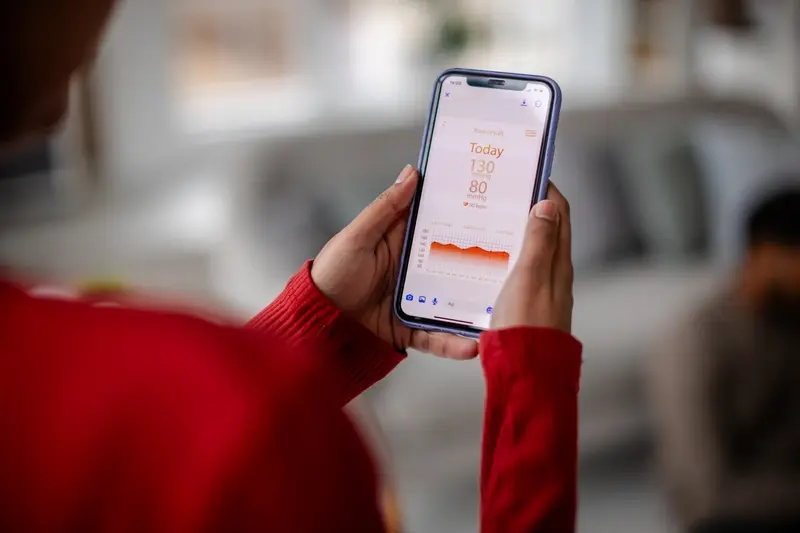What Can Go Wrong In An App Development Project?
App development projects fail at an alarming rate—studies suggest that up to 95% of mobile apps never generate significant revenue or user engagement. That's a staggering number when you think about all the time, money and passion that goes into building these digital products. After working with hundreds of startups and established businesses over the years, I've witnessed firsthand why so many app projects crash and burn before they even get off the ground.
The thing is, most failures aren't due to bad luck or market conditions. They're completely preventable mistakes that happen again and again across different teams, budgets and industries. Whether you're a startup founder preparing to build your first MVP or an established company venturing into mobile, the pitfalls remain remarkably consistent.
The best time to fix problems in app development is before they happen, not after you've spent your entire budget discovering them
This guide walks through the most common disasters I've seen derail app projects—from assuming your users think like you do, to underestimating just how complex modern app development really is. Each chapter covers real problems with practical solutions, so you can spot these issues early and steer your project towards success rather than becoming another cautionary tale.
Assuming Everyone Wants What You Want
One of the biggest mistakes I see in app development projects is when someone builds an app based purely on their own preferences and assumptions. They think "I would use this, so everyone else will too"—but that's rarely how it works in practice.
I once worked with a client who was absolutely convinced that their fitness app needed a bright pink colour scheme because it was their favourite colour. They couldn't understand why user feedback consistently showed people found it off-putting and unprofessional. This kind of personal bias can completely derail a project.
Common Personal Bias Mistakes
- Choosing features based on what you personally find useful
- Making design decisions based on your taste rather than user needs
- Assuming your age group represents all potential users
- Thinking your technical knowledge level matches your users'
- Believing your industry experience applies to everyone
The reality is that successful apps are built for their intended users, not for the person paying for development. Your personal preferences might actually work against what your target audience wants or needs.
This is exactly why user research exists—to bridge the gap between what you think people want and what they actually want. Skip this step at your own peril; you'll likely end up with an app that makes perfect sense to you but confuses everyone else.
Underestimating Development Complexity
Building an app is like building a house—except the house is invisible, the foundation keeps changing, and everyone thinks they know how to do it better than you do! I've lost count of how many times someone has said to us "I just need a simple app, like Instagram but for dogs" without realising that Instagram has hundreds of engineers working on it full-time.
The problem starts early in most app projects. People see the finished product—a sleek interface, smooth animations, instant responses—and think that's all there is to it. What they don't see is the mountain of code running behind the scenes, the databases, the security layers, the error handling, and the countless edge cases that need addressing.
What Makes Apps Complex
Even the most basic app needs to handle situations you probably haven't thought about. What happens when someone's internet cuts out mid-way through uploading a photo? How do you stop hackers from accessing user data? What if your startup suddenly gets featured on TV and a thousand people try to use your MVP at once?
- User authentication and security
- Data storage and synchronisation
- Different screen sizes and device types
- Network connectivity issues
- App store approval processes
- Performance optimisation
Start with the most basic version of your app idea and add complexity gradually. Your first MVP should do one thing really well, not ten things poorly.
The smart approach? Be honest about what you don't know and work with developers who can spot potential problems before they become expensive headaches. Oh and make sure you listen to their advice, it's golden.
Setting Unrealistic Deadlines
Time pressure makes people do silly things—and app development is no exception. I've watched clients squeeze what should be six-month projects into eight-week timelines, then act surprised when things go sideways. The truth is, building quality software takes time, and no amount of wishful thinking changes that.
Unrealistic deadlines don't just stress out developers; they create a domino effect of problems. Quality suffers because there's no time for proper testing. Features get cut or built poorly. Bugs multiply like rabbits. The whole project becomes a frantic race to launch something, anything, by the deadline.
Why Deadlines Go Wrong
Most unrealistic deadlines come from misunderstanding what goes into app development. People see the finished product and think "how hard can it be?" They forget about all the invisible work—backend systems, security, testing, app store approval processes.
- Design iterations and user feedback cycles
- Platform-specific development requirements
- Integration with third-party services
- Quality assurance and bug fixing
- App store review and approval time
Building Buffer Time
Smart project planning includes buffer time for the unexpected. Server issues happen. Requirements change. New bugs surface during testing. A good development team will help you set realistic expectations from the start, even if it means launching later than you'd hoped.
Skipping User Research and Testing
I see this mistake more than any other in app development projects. Startup founders get so excited about their brilliant idea that they skip straight to building without talking to actual users first. They assume they know what people want—but assumptions can be very expensive mistakes.
User research doesn't have to be fancy or cost thousands of pounds. You can start by chatting to potential users over coffee, sending out simple surveys, or even posting in relevant Facebook groups. The goal is to understand if people actually have the problem you think they have and whether your solution makes sense to them.
Testing Your MVP Early
Once you start building your MVP, testing becomes even more important. I've watched perfectly good app projects fail because the team waited until launch to get user feedback. By then, it's too late to make major changes without starting over.
The best time to find out your app doesn't work is before you've spent months building it
Simple user testing can save you months of development time and thousands in budget. Get your app in front of real people as early as possible—even if it's just wireframes or a basic prototype. Their feedback will be worth its weight in gold.
Feature Creep and Frankenstein Apps
I've lost count of how many times I've seen a perfectly good app idea turn into a monster. You know the type—apps that started simple but ended up doing everything except making you a cup of tea. Feature creep is what we call it when new features keep getting added to an app during development, and trust me, it's one of the fastest ways to derail your project.
Here's what usually happens: you start with a clear vision for your app, maybe something that solves one specific problem really well. Then during development, someone has a "brilliant" idea for another feature. Then another. Before you know it, your simple photo-sharing app now has messaging, shopping, weather updates, and a built-in calculator. Sound ridiculous? I've seen worse!
The Real Cost of Feature Creep
Adding features isn't just about extra development time (though that's expensive enough). Each new feature brings its own complications:
- More testing required across different devices and scenarios
- Increased chances of bugs and crashes
- Confused users who don't understand what your app actually does
- Longer approval times from app stores
- Higher ongoing maintenance costs
The result? What I call a Frankenstein app—something cobbled together from different parts that doesn't really work as a whole. Users open it, get confused by all the options, and delete it within minutes. Save yourself the headache and stick to your original vision. You can always add features later once you've proven your core concept works.
Adding Unnecessary Risk Into the Project
Another think I see all the time is a client that take a perfectly reasonable app development project and then piles on risks like they're collecting trading cards. New technology that's barely out of beta? Let's use it! A payment system nobody's heard of? Perfect! Launch in twelve countries simultaneously? Why not!
When you're building an app, especially if you're a startup working on an MVP, every unnecessary risk you add multiplies your chances of failure. I get it—shiny new tech is exciting, and that blockchain integration sounds impressive in investor meetings. But each risky choice you make is another potential point of failure that could derail your entire app project.
Common Risks Teams Add Without Thinking
- Using brand new frameworks or programming languages
- Integrating with untested third-party services
- Building custom solutions instead of proven alternatives
- Launching on multiple platforms simultaneously
- Adding complex features before validating basic ones
Smart app development means being boring with your technical choices—at least initially. Use proven technologies, established payment processors, and reliable hosting services. Save the experimental stuff for version two when you've got users and revenue to cushion any bumps.
Start with the most conservative technical approach that meets your needs. You can always upgrade later, but you can't undo a failed launch caused by untested technology.
Budget Problems and Hidden Costs
Money troubles in app development projects are like discovering your weekly shop costs twice what you expected—except the stakes are much higher. I've watched many projects spiral out of control because clients didn't plan for the real costs involved. The initial quote might look reasonable, but then reality hits.
The biggest shock comes from scope creep, as discussed earlier. You start with a simple app idea, then suddenly you want push notifications, user accounts, payment processing, and social media integration. Each addition costs money—and the costs add up fast. What seemed like a £50,000 project becomes £150,000 before you know it.
Common Hidden Costs That Catch People Out
- Third-party service fees and API costs that weren't budgeted for
- App store fees and developer account subscriptions
- Additional testing rounds when bugs are discovered
- Server hosting and database costs that scale with users
- Post-launch support and maintenance
- Marketing and user acquisition costs
The smart approach is building a buffer into your budget from day one. I always tell clients to add at least 30% to their initial budget expectations. This isn't because we're trying to squeeze more money out of them—it's because app development is unpredictable and changes are inevitable.
Conclusion
After working on hundreds of app development projects over the years, I can tell you that most of the problems we've covered in this guide are completely avoidable. The trouble is, when you're excited about your app idea—and you should be excited!—it's easy to rush ahead without thinking things through properly.
The startups that succeed with their MVP aren't necessarily the ones with the best ideas; they're the ones who plan carefully, do their homework, and stay realistic about what they can achieve. They listen to their users, stick to their budgets, and resist the temptation to add every feature they can think of. Before you get started, it's worth understanding what your app developer will need from you to set yourself up for success.
Building an app is a bit like learning to drive—you need to master the basics before you can handle the tricky stuff. Get your user research right, plan your budget properly, and don't try to build everything at once. If you're just starting out, our guide on turning your app idea into reality can help you take those crucial first steps. To ensure your app stands out from the crowd, focus on what makes the difference between good apps and stellar apps, and avoid common app design mistakes that could undermine your user experience. Remember to ensure your development team focuses on the most popular features that users actually want.
The mobile app world is tough, but it's not impossible. With good planning and realistic expectations, your app development project can be one of the success stories rather than a cautionary tale.
Share this
Subscribe To Our Learning Centre
You May Also Like
These Related Guides

Do I Need Different Insurance For iOS vs Android Apps?

Can I Be Sued If My App Causes Financial Loss To Users?



